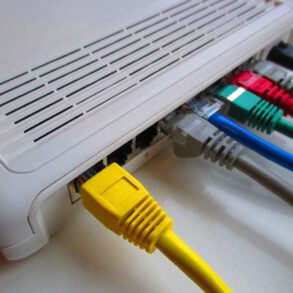New technology is changing the nature of sensors and the way they interface with data acquisition and control systems. Researchers at U.C. Berkeley have developed an open-source hardware and software platform that combines sensing, communications, and computing into a complete architecture. The first commercial generation of this platform was dubbed the Rene Mote, and several thousand of these sensors have been deployed at commercial and research institutions worldwide to promote the development and application of wireless sensor networks.
The platform’s development community is based on the open-source model, which has become well known with the increasingly popular Linux operating system. Most development work is done in the public domain, and it includes the hardware design and software source code. Users of the technology contribute their developments back to the community so that the base of code and hardware design grows rapidly. Although there’s no official consortium, the current community includes U.C. Berkeley, U.C. Los Angeles, Intel Research Labs, Robert Bosch Corp., U.S. Air Force Research Labs, Crossbow Technology, and others.
To implement improvements based on feedback on the first few thousand wireless sensors deployed, U.C. Berkeley and the collaborating researchers devised a second-generation platform. The platform is named MICA because its final electronic implementation resembles its silicate relative, which separates into thin mineral leaves. Likewise, the MICA electronic hardware is a series of thin processor/radio and sensor circuit cards sandwiched together to form an integrated wireless smart sensor. In the past, this integration wasn’t possible, but advances in low-power CMOS wireless communications devices and MEMS sensors makes this possible.
Hardware Design of Wireless Sensors
The basic MICA hardware now uses a fraction of a watt of power and consists of commercial components a square inch in size. But MICA’s developers expect end users and OEMs to create many flavors of hardware to meet the needs of a variety of applications. With advances in MEMS and low-power wireless technology, the plan is to more deeply integrate and customize versions of the hardware so that they can outperform current designs based on commercial components. Researchers have completed the basic hardware design, and Crossbow Technology has built several thousand units and distributed them to developers.
The hardware design consists of a small, low-power radio and processor board (known as a mote processor/radio, or MPR, board) and one or more sensor boards (known as a mote sensor, or MTS, board). The combination of the two types of boards form a networkable wireless sensor.
The MPR board includes a processor, radio, A/D converter, and battery. The processor is an ATMEL ATMEGA, but there are other processors that would meet the power and cost targets. The processor has 128 KB of flash memory and 4 KB of SRAM. In a given network, thousands of sensors could be continuously reporting data, creating heavy data flow. Thus, the overall system is memory constrained, but this characteristic is a common design challenge in any wireless sensor network.
Photo 1. The MICA processor and radio board includes an Atmel chip, which serves as the processor and runs the TinyOS. The board’s 51-pin connector interfaces with the sensor boards. On the back side of the processor/radio board is a second 51-pin connector and the radio.
|
Dealing with the tight memory constraint is given special consideration in the development of a software framework or operating system for MICA’s MPR modules. The processor has three sleep modes: idle, which just shuts the processor off; power down, which shuts everything off except the watch-dog; and power save, which is similar to power-down, but leaves an asynchronous timer running. Power is provided by any 3 V power source, typically two AA batteries. Photo 1 shows a picture of the MICA hardware.
The radio is the most important component of the MPR module because it represents the real-world communication conduit. The hard real-time constraints encountered in dealing with the radio (and with the sensors) form a second challenge for the software running on the MICA. The radio consists of a basic 916 MHz ISM band transceiver, antenna, and collection of discrete components to configure the physical layer characteristics, such as signal strength and sensitivity. It operates in an ON/OFF key mode at speeds up to 50 Kbps. Control signals configure the radio to operate in either transmit, receive, or power-off mode. The radio contains no buffering, so each bit must be serviced by the processor in time.
Figure 1. The MICA processor/radio board has all the necessary electronic components to interface with a wide variety of sensors.
|
The MPR modules contain various sensor interfaces, which are available through a small 51-pin connector that links the MPR and MTS modules. The interface includes an 8-channel, 10-bit A/D converter; a serial UART port; and an I2C serial port. This allows the MPR module to connect to a variety of MTS sensor modules, including MTS modules that use analog sensors as well as digital smart sensors. The MPR module has a guaranteed unique, hard-coded 64-bit address, which is the Digital ID from Dallas Semiconductor. Figure 1 shows a block diagram of the MPR module.
Power consumption equates to battery life. Long battery life is desired, and in some applications, one to five years is required. The processors, radio, and a typical sensor load consumes about 100 mW. This figure should be compared with the 30 µW draw when all components are in sleep mode. The overall system must embrace the philosophy of getting the work done as quickly as possible and then going into sleep mode. This is a third key constraint on the software design for wireless networked sensors.
The MTS sensor boards are easily designed and configurable. The only requirement is the use of the standard 51-pin connector and one of the three hardware interfaces (i.e., analog, UART digital, and I2C digital). The MTS boards currently include light/temperature, two-axis acceleration, and magnetic sensors and 4–20 mA transmitters. Researchers are also developing a GPS board and a multisensor board that incorporates a small speaker and light, temperature, magnetic, acceleration, and acoustic (microphone) sensing devices. The MICA developer’s community welcomes additional sensor board designs.
|
Software and the TinyOS
A considerable portion of the challenge faced by the developers of MICA devices is in the software embedded in the sensors. The software runs the hardware and network—making sensor measurements, routing measurement data, and controlling power dissipation. In effect, it is the key ingredient that makes the wireless sensor network produce useful information.
To this end, a lot of effort has gone into the design of a software environment that supports wireless sensors. The result is a very small operating system named TinyOS, or Tiny Microthreading Operating System, which allows the networking, power management, and sensor measurement details to be abstracted from the core application development. The operating system also creates a standard method of developing applications and extending the hardware. Jason Hill of U.C. Berkeley authored the original open source operating system.
A good way to understand the TinyOS is to familiarize yourself with the design considerations and constraints that led to its creation and architecture. All of these considerations and complexities make it clear why an operating system like TinyOS is so valuable to the users and OEMs of wireless sensors.




